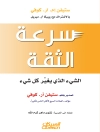Written by Steven Collings, winner of Accounting Technician of the
Year at the British Accountancy Awards 2011, this book deals
with the significant changes auditing has undergone in recent
years, due in large part to well-publicised corporate disasters
such as Enron and Parmalat, which have shaken the profession. In
response, many countries have replaced pre-existing domestic
standards with International Standards on Auditing (ISAs) in an
attempt to ensure that auditors th...
Written by Steven Collings, winner of Accounting Technician of the
Year at the British Accountancy Awards 2011, this book deals
with the significant changes auditing has undergone in recent
years, due in large part to well-publicised corporate disasters
such as Enron and Parmalat, which have shaken the profession. In
response, many countries have replaced pre-existing domestic
standards with International Standards on Auditing (ISAs) in an
attempt to ensure that auditors throughout the world apply the same
level of standards during all audit assignments, and that audit
quality remains consistent on a global basis.
International Standards on Auditing are frequently updated to
improve and clarify their application throughout the audit and
accounting profession. They can be extremely complex and difficult
to apply in real life situations. It is essential to apply the
standards with sufficient rigor to enable an efficient audit to
take place, to satisfy the regulators and ensure that the client
receives and audit which is beneficial, cost effective, and which
conforms to the prescribed framework; however, auditors are often
criticised for failing to do so.
Recognising that auditing is not always an exact science, and
that in many cases the auditor is called upon to make a judgement
in situations open to differing opinions, this book takes a
practical and pragmatic approach to following International
Standards on Auditing. Steve Collings looks at the full ISAs in
their final form, as reissued following the IAASB ‘Clarity
Project’, and give auditors guidance on how to interpret and apply
them in real life situations. Each redrafted or rewritten ISA is
dealt with in a separate chapter, containing case studies and
illustrative examples. The book also covers the regulatory
framework of auditing and gives a summary of the five ethical
standards applicable to auditors, as mapped by the IAASB. Detailed
appendices provide an overview of IFRS and IAS, illustrative audit
tests and illustrative financial statements.












